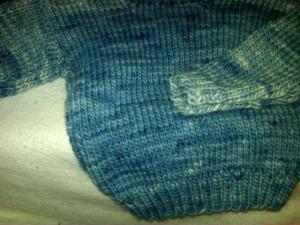I’ll return to looms next blog. But I wanted to post about the indigo dyed sweater. Indigo loses strength with repeated dyeing I like the marbled effect but if one dyes the fiber in successive batches, as I did, the later skeins of yarn are lighter. See the sleeve? Still a few bits of darker dye, but overall the color is a lot less intense. Just FYI for all the dyers out there.
Tag Archives: indigo
To Dye for – Indigo
Indigo is probably the most familiar dye in the world and has a long history of use. It is thought that India was the first place indigo dyeing began use of the dye quickly spread. From the Tuaregs in the Sahara to Cameroon, clothing dyed with indigo signified wealth.
In the United States, of course, indigo gave the characteristic blue to denim (although most of the dye now used is synthetic.) Woad also yields a blue dye (yes, the same woad used by the Celts) but it is not usually as deep a blue. Asian indigo, Indigofera sumitrana, yields true indigo.
Indigo is not water soluable and so has to be treated to make it useable. One of the pre-industrial processes was soaking it in stale urine. Many accounts do not mention this particular fact but the pungency of the process is regularly described. The result is known as indigo white. Fabric dyed in the indigo white turns blue with oxidation. Indigo is also toxic so there is plenty of opportunity for indigo workers t become sick. And despite the processing, indigo fades slowly over time.
I saw items dyes with indigo in the highlands of Peru. The hanks of wool were all different colors from a light royal blue to such a deep blue it was almost navy.
During the Colonial period, there were indigo plantations in South Carolina. Three harvests, the last in early December, was the goal and contemporary accounts describe both the pungency of the smell and the toll the harvests took upon the slaves. Indigo was synthesized in the late 1890’s and within twenty years or so had almost completely replaced the natural substance.

